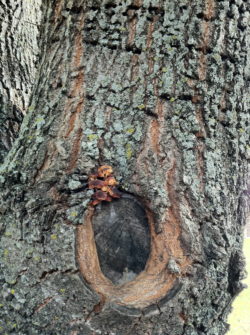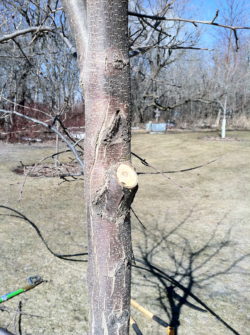Tree Pruning Basics
There is a lot to consider when deciding to prune a tree. Tree pruning can provide a lot of benefits to us and the tree. But it can also be a major contributor to tree health decline, decay, or future problems if not performed correctly. This article will cover the basics about tree pruning and some links to other important articles involving when and how often to prune.
Pruning Vs. Trimming
First, I want to cover the semantics between these two words and why they are important to proper tree health care and structure.
Pruning – removing branches from a tree or other plant using approved practices, to achieve a specified objective. In other words, pruning is carefully removing a part of the tree with a clear plan in mind and in a way that is best for the tree to handle the loss.
Trimming – removing branches from a tree or other plant in order to accomplish an overall plant shape or appearance, usually involving cutting at random or indiscriminate places along the branch. The best example of this is trimming a hedge to be a certain shape or size (shrubs can thrive off trimming, trees cannot). The tool cuts wherever it needs to make the plant a certain size.
So why does that matter?
Trees compartmentalize. They grow over long periods of time (years) and have to stay strong to grow tall. To try and slow decay they grow in sections. Think of it like a ship. Ships are built in compartments. So if one floods, that compartment can be closed off and the whole ship doesn’t sink. A tree behaves in a similar way. There are only certain spots on a tree where we can remove a branch and have the rest of the tree grow over that wound and compartmentalize. If a cut is not made at one of those locations (node or branch collar), then the rest of the wood can decay and enter the rest of the tree. Once decay gets into a tree, there is no getting it out. Then caring for the tree gets more difficult.
In other words, pruning is what you want to do to your tree, not trimming.

Large pruning wounds made on a tree may never fully close. This leaves the tree open to decay, like what happened here.
Types of Pruning
As was described in the definition of pruning, there should be an objective. A plan. Never will I prune a tree just for the sake of pruning. The trees don’t NEED it, we WANT it. There should be a plan for every tree. Here are some of the common (industry approved) types of tree pruning. (Did you know there are actually industry standards for Pruning and other types of arboricultural practices?)
Reduction
Reduction pruning is when the tree is maybe too tall for an area or a long limb is too big to remove but is hitting the house. The end of the limb will be reduced back to a proper lateral branch. That way the branch can compartmentalize the wound. This pruning can also be done to slowly remove a branch, over time, that maybe has a defect but is too large to remove all at once for overall tree health.
Canopy Raising
Raising, or sometimes called lifting, is one of the most common types of tree pruning. Raising a canopy creates clearance for vehicles or people along streets and sidewalks. Young trees perform the best with canopy raising since the wounds are small enough so the trunk can grow around the wound.
Caution should be taken to not raise the canopy too quickly while the tree is young. The trunk needs to develop a taper to handle wind loads higher up, the lower branches help with this taper. But overall, pruning off branches while the tree is young and smaller is far better for the tree, versus waiting until the lower limb is an issue and making a larger wound on the trunk.

Pruning cuts should be clean and made as close to the branch collar without damaging it.
Thinning
Thinning out a canopy is tricky process. It has its benefits, but one has to be careful not to prune out too much. The process is used to encourage other branches to grow larger or to prevent tightly growing branches from being too close together. Thinning must be done with care though, so the tree doesn’t respond with extra sprouts or reaction growth due to the stress. Traditionally, thinning was used as a way to open up the tree and get more sunlight to interior leaves. This is not a standard practice anymore. That kind of thinning is stressful and usually results in reaction sprouts.
Canopy Clean (Deadwood)
Canopy clean tree pruning is another common pruning practice. Its objective is to remove all the dead, diseased, and/or broken limbs from a tree. Usually it is specified out in a work order that it would be removing limbs greater than one or two inches in diameter and larger. Otherwise, it could be very tedious and expensive to remove all the dead twigs. Canopy cleaning (or Deadwooding) is something I encourage most tree owners to have done with their trees every five years or so. It makes the trees look very clean and nice. Plus it really makes a difference in the amount of twigs you’ll spend picking up after a storm.
Last Few Tips
This article has reviewed the basics of what pruning is and why it’s important. It also has describe the main objectives there should be when deciding to prune. I also want to share these last few tips when pruning trees:
- Avoid any type of wound dressing or covering. It’s against industry standards and actually does more harm than any sort of benefit.
- Use sharp tools designed for pruning.
- Be safe! Hire a professional if you have to get off the ground to prune!
When is Pruning Best Performed?
This is better answered in another article I wrote. You can read about it HERE.
Was my Tree Pruned Well?
Again, this is best answered in another article. Find it HERE.

